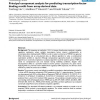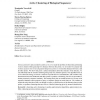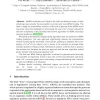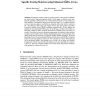41 search results - page 5 / 9 » Fast Motif Selection for Biological Sequences |
BMCBI
2005
13 years 7 months ago
2005
Background: The responses to interleukin 1 (IL-1) in human chondrocytes constitute a complex regulatory mechanism, where multiple transcription factors interact combinatorially to...
JMLR
2012
11 years 10 months ago
2012
Given a point set S and an unknown metric d on S, we study the problem of efficiently partitioning S into k clusters while querying few distances between the points. In our model...
RECOMB
2006
Springer
14 years 7 months ago
2006
Springer
mRNA molecules are folded in the cells and therefore many of their substrings may actually be inaccessible to protein and microRNA binding. The need to apply an accessability crite...
GCB
2004
Springer
13 years 11 months ago
2004
Springer
: In biological sequence analysis, position specific scoring matrices (PSSMs) are widely used to represent sequence motifs. In this paper, we present a new nonheuristic algorithm, ...
IPPS
2003
IEEE
14 years 25 days ago
2003
IEEE
We have developed a new algorithm that allows the exhaustive determination of words of up to 12 nucleotides in DNA sequences. It is fast enough as to be used at a genomic scale ru...




